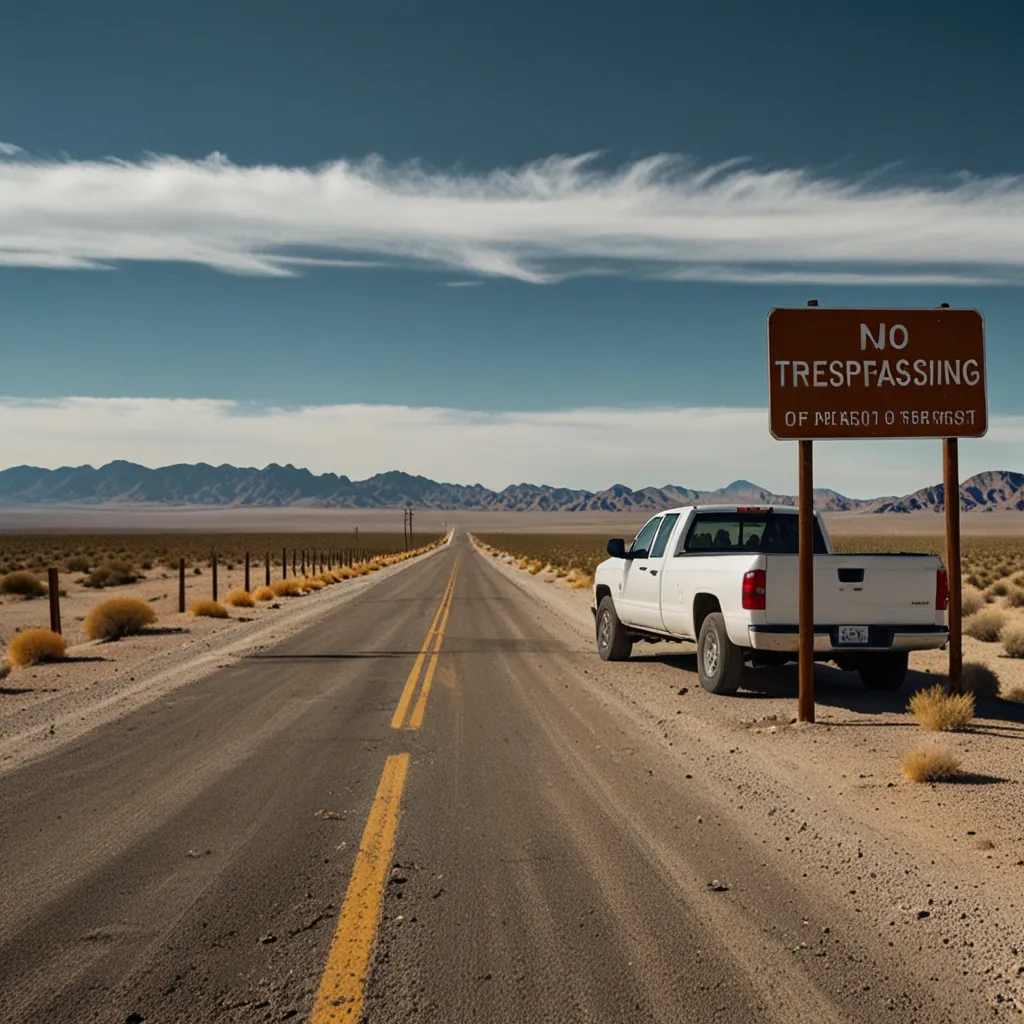Deep inside the Nevada desert, there’s an unmarked dusty road leading to the front gate of what people might argue is the most mysterious place on Earth – Area 51. It’s not the high-tech fortress you might imagine. Instead, it’s guarded by a simple chain link fence, a boom gate, and a bunch of signs screaming at the top of their lungs “No Trespassing!“. However, appearances can be deceiving. They’re always watching, with cameras planted everywhere, and the occasional white pickup truck, complete with tinted windows, peeking over a distant hill.
For decades, Area 51 has been a black hole for conspiracy theories swirling around the possibility that the U.S. government is hiding alien technology and maybe even the little green men themselves. Books, TV shows, and even massive online raids have all tried and failed to peel back the layers of secrecy.
Area 51 was established during the Cold War for testing aircraft like the U2 and SR-71 Blackbird reconnaissance planes. Despite opening back in 1955, the place wasn’t officially acknowledged until 2013 by the CIA. Then, President Obama joked about it in 2013 and became the first U.S. president to mention the place publicly.
Cue Bob Lazar. In 1989, he strolled into the public eye with a bombshell of a story that would make jaws drop and keyboards clatter. Robert Scott Lazar, known to many as Bob, took the world by storm after appearing on a Las Vegas TV station interview. He claimed Area 51 was home to, wait for it… actual flying saucers of extraterrestrial origin. The interview blew up, and soon, people were swarming the area like ants on a picnic, all hoping to catch a glimpse of alien spacecraft.
So who is Bob Lazar, you ask? Born on January 26, 1959, Lazar has always had a knack for tinkering with tech. Even before making his jaw-dropping claims, he built a jet car that could reach speeds of up to 200 mph. Whether he’s a genius or just really good at stretching the truth, well, that’s still up for debate.
Lazar claims he used to work as a physicist at the Los Alamos National Laboratory, where he supposedly helped develop a particle accelerator. From there, he said he got recruited to a hush-hush government base near Area 51 called S4. And that’s where things get really interesting.
Lazar alleges that at S4, researchers were reverse-engineering alien spacecraft. He even outlined in great detail how these spacecraft supposedly worked, using anti-gravity cylinders to move in any direction. According to him, the spacecraft were powered by an element called 115, which at the time wasn’t even on the periodic table yet.
When Lazar went public, he didn’t just shake things up; he rattled them down to the core. His story of extraterrestrial technology didn’t just make folks curious—it turned into an obsession. It wasn’t all fun and games, though. Lazar claimed that ever since blowing the whistle, he and his friends had been shadowed by unknown entities, who broke into his home and car, messing with his life to no end.
Though proving Lazar’s extraordinary claims are tough, some things do stand out. The first major point is that before Lazar’s story, not many folks knew about the secret stuff going down at Area 51. He changed all that. The second noteworthy thing was Lazar’s curiosity-piquing mention of a hand scanner that analyzed bone density to identify personnel. This system was later confirmed to have been used during his alleged time of employment.
And then there’s that element 115. Back in 1989, talking about an element with such weight sounded like sci-fi. Fast forward to 2003, and Russian scientists finally synthesized it, calling it Moscovium in 2013. While the element they created wasn’t stable and decayed in less than a second, Lazar’s claims didn’t seem as outlandish anymore.
In 2017, Bob Lazar’s life took another wild turn when his scientific supply company was raided by the FBI and the Michigan State Police. Officially, they were looking for thallium sulfate, but those who believed in his story thought they aimed to find element 115. Reporter Tim McMillan directly asked Lazar if he had any of this element, to which he replied he wouldn’t reveal it anyway. Seems like secrecy runs deep here.
Adding fuel to the fire, videos released by the Pentagon showed unexplained aerial phenomena that resonate eerily with Lazar’s descriptions. And while he admitted feeling no necessity to validate his story to the skeptics, the glowing disks seen in these videos and the almost otherworldly way they moved made many reconsider their stance on Lazar’s claims.
Lazar’s biography is peppered with more missing chapters than a mystery novel. Institutions he claimed to have attended deny his existence. Los Alamos National Laboratory officials stated that they could find no records of him. This led skeptics to label him a charlatan, but authentic records found in an old phone book and a local newspaper did seem to back up his story to some extent.
Folks who doubted Lazar always circle back to the same question: why risk his career and privacy? Those who believe him think it’s all about getting the truth out there for the public interest. Whether he’s a hero exposing a massive cover-up or a guy with a vivid imagination, he never pocketed any money or fame from his revelations.
Journalist George Knapp, who first brought Lazar’s story to light, knew that the truth was out there—or at least that Lazar believed it was. Over time, Knapp became convinced someone really was messing with Lazar’s head, breaking into his house, and making his life a living nightmare. Knapp’s inquiries revealed other people who had felt a mysterious hand of intimidation after trying to share what they knew.
Bob Lazar’s story has the hallmarks of a gripping sci-fi thriller, but it’s real life—at least, it’s his real life. And even though his tale is dotted with gaps, Lazar’s narrative stays consistent over the years. His friends and those who were there vouch for him adamantly. With the recent Pentagon revelations, Lazar’s once seemingly ludicrous claims are gaining attention and perhaps credibility.
His journey from a so-called closet of secrets at S4 to mainstream TV and podcast interviews in modern times is a whirlwind. Regardless of the manner in which information is presented or argued, one thing becomes clear: Lazar’s story won’t be dismissed anytime soon. The scope of his claims and the gravity (pun intended) of what he’s revealed ensures that everyone keeps asking: what if Bob Lazar has been telling the truth all along?
It all circulates back to the quintessential human trait—curiosity. Whether you’re rooting for aliens, government conspiracies, or just a riveting tale, Bob Lazar’s account has something for everyone. Believe or don’t, but his story provides a touchstone for our imaginations and a springboard for the age-old question: Are we alone?






